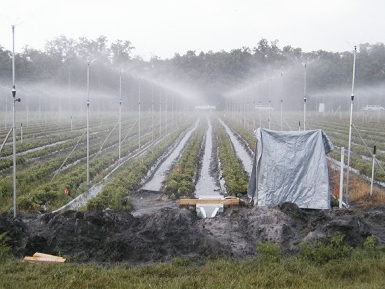
Waterborne Through the Ages
There’s no doubt that our work as environmental scientists and engineers has evolved over the years. These changes have been in direct response to regulatory requirements, client needs, industry shifts, and the evolution of science and technology themselves. Our original service lineup didn’t include drone technology or the use of machine learning, as two examples. The nature of our work has placed Waterborne at the forefront of this evolution, and at times, we’ve been part of the team leading the charge!
During our recent Annual Employee Innovation Summit, Principal Engineer Nathan Snyder presented “The Why of Our Work,” a retrospective on how Waterborne’s services have evolved over the decades to meet industry and client needs. In this month’s feature, we'll take a look at some of the milestone study types that have occurred because of regulatory guidance changes or modeling needs, resulting in new and novel study designs:
Environmental Protection Agency (EPA) Pesticide Registration Process Changes: Helping clients evaluate labels and mitigate risk has been a mainstay of Waterborne’s service lineup. This is an ongoing effort to address regulatory challenges and maximize the valid scientific use of the environmental fate data package in exposure modeling. Recent changes in the Endangered Species Act implementation by USEPA have led to further spatial analysis, refined exposure modeling, and evaluation of focused mitigation and label management.
Field Study History
Terrestrial Field Dissipation (TFD) and Aquatic Field Dissipation (AFD): TFDs and AFDs (for aquatic products) are registration requirements for both the EU and the EPA that answer the basic question: "where did the pesticide go when applied in the field?" By using a conceptual model in the study design phase, Waterborne’s scientists addressed this question by determining which routes of dissipation need to be evaluated to adequately characterize the behavior of a pesticide in the field under actual use conditions. From the time the study guidance was developed, Waterborne has supported clients in standard study design and added important environmental pathway modules such as volatility, runoff, or leaching. We have applied the latest instrumentation technologies to manage water inputs, collect environmental conditions, and manage the increasingly intense data collection.
Groundwater: In his early career, Waterborne co-founder Pat Holden worked with the Water Science and Technology Board to manage the National Research Council’s (NRC) Committee on Irrigation-Induced Water Quality Problems. This Committee was formed to advise the state of California and the U.S. Department of the Interior on environmental problems associated with irrigation agriculture in California’s Central Valley. Pat’s report on pesticides in groundwater caught the attention of the EPA’s Office of Pesticides Programs (OPP), leading to his hiring to manage their groundwater section. This shift eventually led to Prospective Groundwater (PGW) Monitoring Studies and Retrospective Groundwater Monitoring Studies, which Waterborne implemented during its founding years. The data from the PGW studies were used by USEPA to create the SCIGROW model (late 1990’s), which is now replaced by groundwater scenarios in PWC. Today, Waterborne scientists generally address groundwater concerns with standard and higher-tier spatial modeling of groundwater leaching that is derived from the models developed from these core studies.
Surface Water: The history of surface water studies has an almost inverse history to groundwater studies. USEPA has generally addressed surface water using modeling tools, and these remain a significant part of Waterborne's offerings, but over the years, Waterborne has implemented novel study designs to capture processes or look at conditions not well represented in the models. This has included numerous watershed-scale studies across the Midwest looking at exposure in high agriculture watersheds that are smaller than typically included in USGS programs. Other study types have included field and small-scale runoff studies under natural and simulated rainfall, looking at other conditions where modeling results were considered unreliable. Some of the systems where these were conducted include raised bed plasticulture, turf runoff, injected fumigant, or flood-type irrigated fields.
Waterborne prides itself on designing and implementing studies based on client needs, from initial design to final report.

Waterborne Environmental, Inc. Hired to Create Online Dashboard That Tracks Nutrient Loss Across the State of Missouri
READ MORE

Swimming with Bacteria: Water Quality Concerns at the 2024 Paris Olympics
READ MORE

The Right Tool – Multidimensional Models
READ MORE



